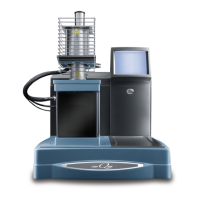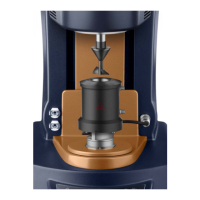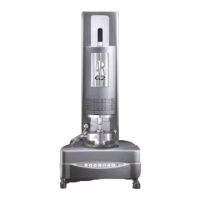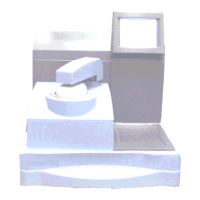TA I
NSTRUMENTS
TGA 2950 B–19
Hi-Res
TM
Option
Unresolvable
Transitions
The Hi-Res
TM
techniques provide useful tools to
improve transition resolution of many sample
materials, but some materials will show little or
no resolution improvement. This is because
these materials have transitions which cannot be
separated by time and temperature alone. The
transitions are usually overlapped such that the
components of interest decompose at or very
near the same temperature and at approximately
the same rate of reaction. For these materials it
may be necessary to employ other techniques
separately or in conjunction with TGA, such as
vacuum, switching purge gases, semi-pressur-
ized sample containment, or evolved gas analy-
sis.
There are some general rules-of-thumb which
will help you decide if the material you are
working with will be a successful candidate for
resolution improvement. First, do the compo-
nents of the sample material decompose at
sufficiently different temperatures? This can
often be determined by running a slow heating
rate survey scan of the material at 1
°
C/minute
and comparing the result to a 20
°
C/minute scan
of the same material. Generally, the tempera-
tures of transition will be lower in the slower
scan, but if there is no observable improvement
in separation of the components, then it is likely
that Hi-Res
TM
TGA will not produce a signifi-
cant separation of the components either.
Always consider purge gas to be a factor when
running survey scans or heating rate trials.
Generally, nitrogen and air are the most com-
mon choices for purge. In some cases, transi-
tions which appear to be one large weight loss in

